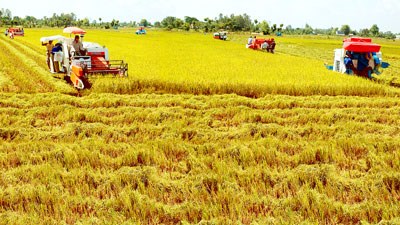In the Mekong Delta region alone, the varieties made by Vietnamese scientists have been grown on 77 percent of the total rice area. In particular, the high-quality OM5451 variety has been used for nearly 1 million hectares.
The productivity of the new varieties is higher than old ones by an average 10 percent, equivalent to an addition 1.65 million tons of rice or over 8 trillion VND per year.
    |
 |
|
Made-in-Vietnam varieties and new techniques and technologies help the country improve the quality and productivity of products as well as competitiveness of its farm produce. |
At the same time, many new techniques and technologies have been transferred and applied in agriculture, contributing to improving the quality and productivity of products as well as competitiveness of Vietnamese farm produce, while reducing production cost and enhancing incomes of farmers.
Last year, the MARD recognized 48 new plant varieties, 29 new technology advances and processes, many of which have been applied in production.
The ministry has also placed order for research on agricultural technologies for the sector’s restructuring towards sustainable development, with 36 technology research projects and seven pilot production projects with the engagement of many enterprises.
In 2018, the MARD will promote technology research and transfer to serve the sector’s reform and the building of new-style rural areas in the 2018-2025 period.
At the same time, the ministry will focus on developing national products and national trademarks for a number of products, including rice, mushroom, coffee, catfish and shrimp.
It will also continue encouraging the involvement of enterprises in scientific research and technology transfer activities.
In 2017, Vietnam exported about 6 million tons of rice, over 1 million tons higher than last year’s figure.
An estimated 524,000 tons of rice was exported in January 2018.
Source: VNA